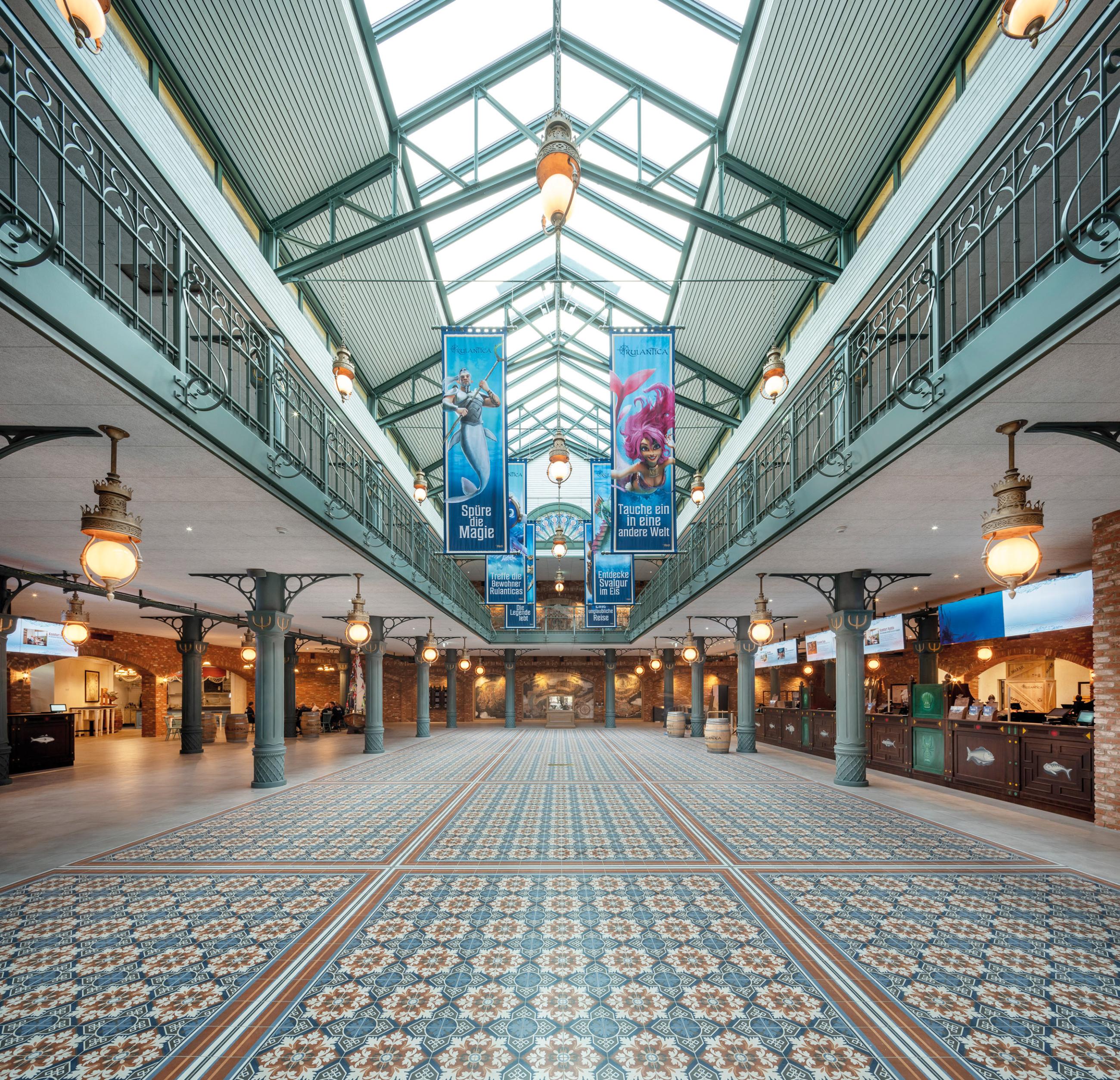“Rulantica” aquatic world at Europa Park in Rust
published in sb 3 2020
By adding the “Rulantica” aquatic adventure world, the leisure park extended its resort to a size equivalent to 63 football pitches. The Nordic theme world is a mix of Scandinavian style, Nordic landscape and mystical settings. The aquatic world was based on the master plan of the architects of PGAV, USA. The plan was studied, optimised and finally implemented by the architects and engineers of pbr AG.
The architectural centrepiece of the aquatic world is a scallop-shaped hall with a height of 20 m and effective space of around 12,000 m², with water accounting for some 3,000 m². The 32,600 m² bathing hall with its ample glazing accommodates nine differently themed areas with 25 water attractions, including 17 slides and a wave pool (the largest in Germany), a Wild River, a Lazy River current channel, several water playgrounds for different age groups, waterfalls, bubble loungers and rest areas. Guests of the “Komfort Hyddas” enjoy an elevated view of the indoor aquatic world. These chalets in exclusive locations serve as private retreats for up to four people.
The 8,000 m² outdoor area features the wild stream by the name of “Vildstrøm”. Both young and old can let themselves be carried along by the heated current. A heated pool with a pool bar open all year round exudes a holiday atmosphere.

Photos
David Franck
